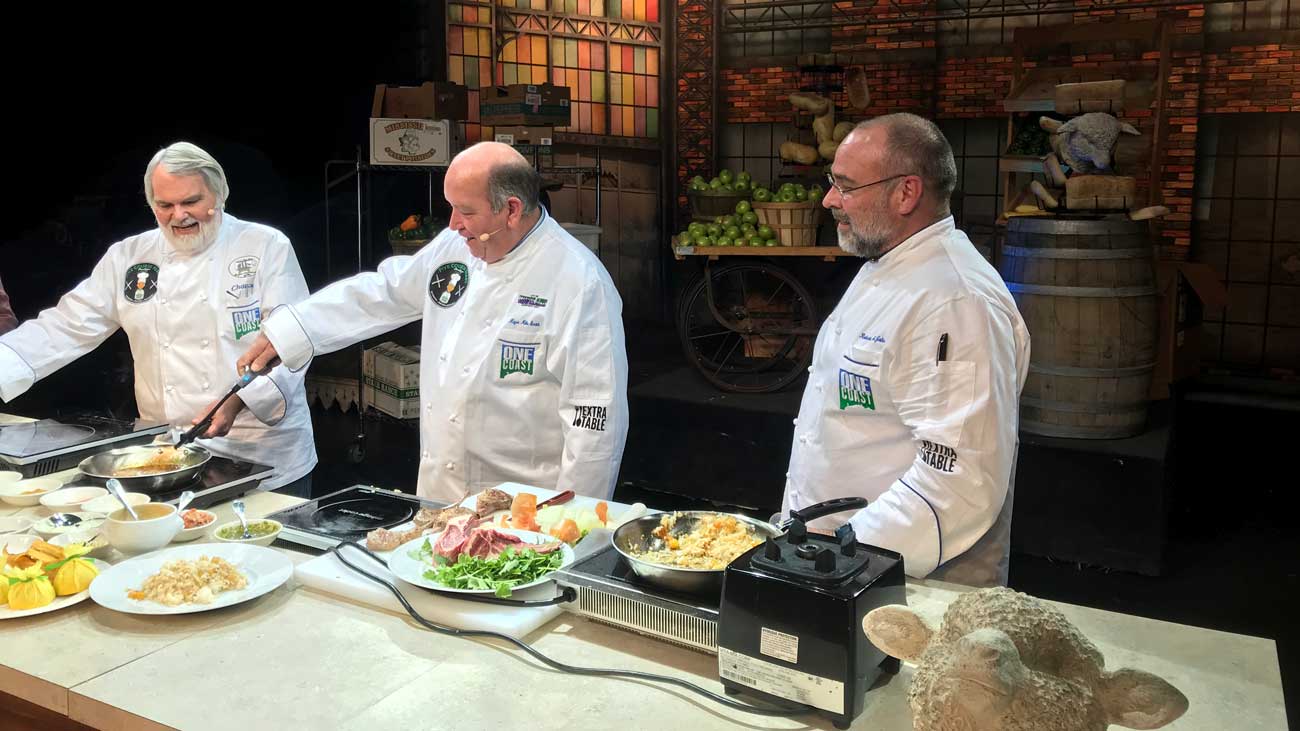I took my son fishing yesterday. While watching him cast his line into the lake I thought of the role that fresh fish has played in my five decades.
I am not a die-hard fisherman by any means, but fresh fish have been a huge part of my youth and professional career.
As a kid my grandfather took me freshwater fishing in the lakes and ponds around my hometown. When I was 10-years old, my mother purchased a small lot a few blocks from the water on a small bayou that led to the Pascagoula River and eventually to the Gulf of Mexico. We built a modest fish camp there and my world changed instantly.
The sleepy little marina at the end of John’s Bayou near a bend in Bluff Creek was a perfect place for a Southern boy to spend the summers of his childhood. Those days were filled fishing for speckled trout, redfish, and flounder, baiting crab traps early in the morning, retrieving crabs late in the afternoon, and running a shrimp trawl behind our small boat.
If I ate seafood during my first 10 years it was either fried catfish or fried shrimp within a few miles of my home. Once we began catching our own in the Mississippi Sound, the wonderful world of seafood was open to me and I became a devout disciple of all edible things that come from the Gulf.
We boiled, and ate, shrimp that had been swimming an hour earlier. We boiled crabs at dusk and picked crabmeat late into the evening. Once we had accumulated enough crabmeat, my mother would make West Indies Salad and we would have a late dinner of nothing but crabmeat and crackers.
Flounder was stuffed, trout was baked, redfish was grilled, and nothing was safe near the cast-iron skillet used for frying. I might have had a permanent residence 70 miles north of the Gulf, but my heart was in those waters.
Somewhere along the way someone showed me how to fry fish using mustard and to grill fish using mayonnaise. Both sound like crude and rudimentary treatments of fresh seafood, and I guess they probably are, but when one has been under the hot sun all day and there is nothing left in the fish-camp pantry but a jar of yellow mustard, some cornmeal, and Crisco one takes what he can get. Actually spreading mustard on a fish fillet, breading it in cornmeal, and then deep frying it works pretty well. It’s nothing that I would ever try at any of our restaurants, but after a long day on the water it’s a treat.
I developed the entirety of my sixth book around the principle of spreading an emulsification onto fish fillet before placing it on a charcoal grill to be cooked. It is the perfect way to grill fish. When I told my editor that my next book was going to be a seafood-grilling book, he scoffed. “People don’t grill seafood,” he said. “They’re scared.” Sitting in a publisher’s office on the Upper West Side of Manhattan, I never felt so far away from my culinary roots.
“Not where I come from,” I said. “We grill seafood all of the time.” That’s when I developed the no-stick grilling marinade we used as the basis for the book. Its origins were in the old fish-camp days, but its practical usage was up-to-date modern. Fish will never stick to the grill if you use the no-stick grilling marinade.
The bonus benefit of using the no-stick grilling marinade is that the protein stays seasoned. If you’ve ever brushed a fish filet with oil and then sprinkled salt and pepper on it, you know that many times the seasoning comes off. The same is true if the process is reversed and the salt and pepper is applied to the protein before the oil.
In 1987, fresh seafood became a more important aspect of my life as our restaurants opened with a commitment to serving fresh fish. Today we cook over 16 tons of Mississippi Gulf shrimp and over eight tons of filleted finfish each year.
I am blessed to live 70 miles north of the Gulf of Mexico. The bounty from those Gulf waters is a restaurateur’s dream. We regularly purchase and serve fresh speckled trout, redfish, grouper, red snapper, flounder, black drum, sheepshead, and triple tail.
The two latter fish, while relatively unknown in restaurants a few years ago, are two of my favorites.
As a kid, we threw sheepshead back. My grandfather said that they were too much work and that the yield was poor. It’s true, sheepshead has a low yield, but the meat it yields is white, mild, flaky, and everything I love in a filet of fresh fish.
The meat of a triple tail is as white as any fish in the Gulf. It’s mild flavored, too.
After a few hours, my son and I reeled in our lines and called it a day. He caught one fish. It was our only catch of the day. If only I had paid better attention while fishing with my grandfather
No-Stick Marinade for Seafood
4 Egg Yolks
1 Tbl Dijon Mustard
1/4 cup Balsamic Vinegar
1 cup Canola Oil
1 cup Light Olive Oil
Warm water as needed
2 Tbl Lawry’s Season Salt
1 Tbl Onion Powder
1 Tbl Paprika
1/2 tsp cayenne Pepper
2 tsp Garlic Powder
1 tsp White Pepper
1 tsp Black Pepper, freshly ground
1 tsp Dry Mustard
1 tsp Dry Oregano
1 tsp Dried Thyme Leaves
Place the egg yolks, Dijon mustard, and vinegar in a food processor. Blend on medium speed for 1-2 minutes.
Slowly drizzle oils into the mixture, one tablespoon at a time. If the marinade becomes too thick, add 1-2 tablespoons of warm water. Once all of the oil has been incorporated, add seasoned salt, onion powder, paprika, cayenne, garlic powder, white pepper, black pepper, dry mustard, oregano, and thyme until incorporated.
Store covered in the refrigerator until needed.
Spread just a little bit of no-stick marinade on fish filets before grilling (make sure that the grill grates are clean).
Yield:
2 1/2 cups



